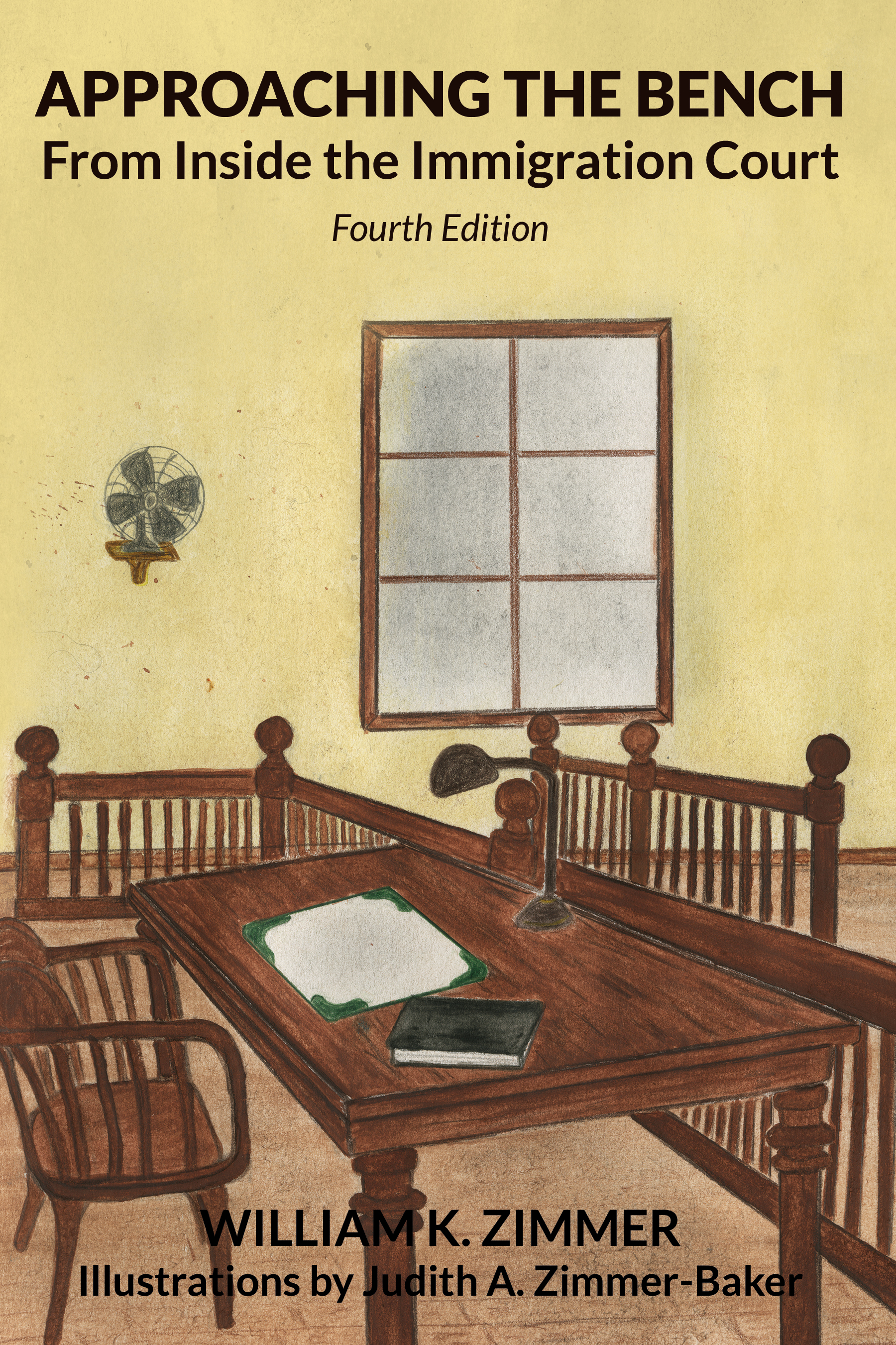Adjustment to LPR Status After Illegal Entry is an “Admission”

The procedural history, facts of record, holding and rationale in Santiago Alejandro Diaz Esparza v. Garland (5th Cir. January 17, 2022) No. 19-60699 are as follows:
Case History
In 2015, the Department of Homeland Security ("DHS") served the Petitioner with a notice to appear, charging that he is subject to removal under section 237(a)(2)(A)(iii) of the Immigration and Nationality Act, as amended (“the Act”) (i.e. alien convicted for an aggravated felony after admission).
An Immigration Judge sustained the aggravated felony charge and ordered the Petitioner removed from the United States.
The Board of Immigration Appeals (“BIA”) dismissed the Petitioner’s appeal.
The Fifth Circuit Court of Appeal denied his petition for review.
The United States Supreme Court granted certiorari, vacated the Fifth Circuit Court of Appeal’s decision, and remanded the case.
The Fifth Circuit Court of Appeal remanded the case to the BIA.
The BIA terminated removal proceedings against the Petitioner.
In 2019, the DHS served the Petitioner with a second notice to appear, charging that he is subject to removal under section 237(a)(2)(A)(ii) of the Act (i.e. an alien who at any time after admission to the United States is convicted for two or more crimes involving moral turpitude (“CIMT”)).
The Petitioner filed a motion to terminate removal proceedings.
The Immigration Judge denied the motion to terminate and sustained the removal charge.
The Petitioner appealed to the BIA.
The BIA affirmed the Immigration Judge’s decision and dismissed the appeal.
The Petitioner filed a timely petition for review with the Fifth Circuit Court of Appeal.
Facts
The Petitioner is a native and citizen of Mexico, who entered the United States without inspection in 1999.
In 2005, the Petitioner adjusted to lawful permanent resident status.
In 2013, the Petitioner was convicted of deadly conduct in violation of Texas Penal Code section 22.05(a).
In 2014, the Petitioner was convicted of evading arrest with a motor vehicle in violation of Texas Penal Code section 38.04.
In 2015, an Immigration Judge found that the Petitioner’s conviction for evading arrest constituted an aggravated felony as defined under section 101(a)(43)(F) of the Act (i.e. crime of violence for which the term of imprisonment is at least one year), and ordered the Petitioner’s removal.
Ultimately, the United States Supreme Court granted certiorari, vacated the Fifth Circuit Court of Appeal’s decision upholding the Immigration Judge’s finding and remanded for consideration of the aggravated felony charge in light of its decision in Sessions v. Dimaya, 138 S. Ct. 1204, at 1210-11 (2018) which held that part of the statutory definition of “aggravated felony” unconstitutionally vague.
After the BIA terminated removal proceedings against the Petitioner, the DHS abandoned the aggravated felony charge and served the Petitioner with a second notice to appear charging that he was subject to deportation and removal under section 237(a)(2)(A)(ii) of the Act. Section 237(a)(2)(A)(ii) of the Act provides that “[a]ny alien who at any time after admission is convicted of two or more crimes involving moral turpitude, not arising out of a single scheme of criminal misconduct . . . is deportable.
After the Immigration Judge sustained the new charge and ordered the Petitioner removed from the United States, the BIA again affirmed the Immigration Judge’s decision to sustain the new charge under section 237(a)(2)(A)(ii) of the Act and dismissed the Petitioner’s appeal.
Held
Petition for Review DENIED
Rationale
The Petitioner challenged his order of removal from the United States by asserting three arguments:
- that because his conviction for evading arrest was the basis of a prior removal proceeding under section 237(a)(2)(A)(iii) of the Act, based on the doctrine of res judicata (i.e. legalese meaning things previously adjudicated), this conviction cannot now support removal under section 237(a)(2)(A)(ii) of the Act;
- that his offense of deadly conduct is not a CIMT, and, therefore, he has not been convicted for two or more CIMTs as required under section 237(a)(2)(A)(ii) of the Act; in particular,
- that according to Gomez-Perez v. Lynch, 829 F.3d 323, at 325, 327-28 (5th Cir. 2016), deadly conduct cannot be a CIMT because CIMTs require a mens rea (i.e. legalese meaning mental state of mind) more culpable than recklessness; and
- that deadly conduct cannot be a CIMT because the offense encompasses acts creating a serious risk of harm, but not actual harm, and thus includes conduct that is not morally turpitudinous; and
- that his 2005 adjustment of status to lawful permanent residency is not an “admission” as defined under section 101(a)(13) of the Act, so his convictions did not occur after he was admitted to the United States; in particular,
- that, according to Marques v. Lynch, 834 F.3d 549 (5th Cir. 2016), the term “admission” does not encompass adjustments of status to lawful permanent residency.
The Fifth Circuit Court of Appeal justified the denial of the petition for review as follows:
Res Judicata
The doctrine of res judicata does not bar a subsequent removal proceeding based on a conviction that also supported a prior terminated removal proceeding, so long as the two proceedings occur pursuant to distinct statutory provisions. See Peters v. Ashcroft, 383 F.3d 302, at 304, 305 n.2 (5th Cir. 2004).
Although both removal proceedings against the Petitioner rely on his conviction for evading arrest, the second removal charge is based on section 237(a)(2)(A)(ii) of the Act (which requires conviction for two or more CIMTs). The removal charge brought by the DHS in the first removal proceeding was based on 237(a)(2)(A)(iii) of the Act (which required conviction for an aggravated felony).
Since each removal proceeding has a distinct statutory basis, the doctrine of res judicata does not bar the second proceeding.
CIMT
The BIA’s interpretation of the term “moral turpitude” and its guidance on the general categories of offenses that constitute CIMTs is entitled to deference in accordance with Chevron U.S.A., Inc. v. Natural Resources Defense Council, Inc., 468 U.S. 837 (1984).
An appellate court, however, reviews de novo (i.e. legalese meaning a new decision unaffected by a previous decision) whether a particular offense qualifies as a crime involving moral turpitude. See Mercado v. Lynch, 823 F.3d 276, at 278 (5th Cir. 2016) (per curiam).
Texas law defines deadly conduct as “recklessly engag[ing] in conduct that places another in imminent danger of serious bodily injury.” See Tex. Penal Code § 22.05(a).
An individual acts recklessly when “he is aware of but consciously disregards a substantial and unjustifiable risk that the circumstances [surrounding his conduct] exist or the result [of his conduct] will occur.” See Tex. Penal Code § 6.03(c).
“‘Serious bodily injury’ means bodily injury that creates a substantial risk of death or that causes death, serious permanent disfigurement, or protracted loss or impairment of the function of any bodily member or organ.” See Tex. Penal Code § 1.07(a)(46).
Gomez-Perez v. Lynch, 829 F.3d 323 (5th Cir. 2016), cited by the Petitioner in support of his argument that crimes committed with a reckless state of mind cannot be CIMTs, involved misdemeanor assault which can be committed with relatively minor physical contacts. Therefore, Gomez-Perez is distinguishable and the conclusions relating to misdemeanor assault are not applicable to the Petitioner’s offense of deadly conduct.
Specifically, deadly conduct entails a much greater degree of potential physical harm (i.e. an imminent threat of serious physical injury) than misdemeanor assault which could include “relatively minor physical contacts.” See Esparza-Rodriguez v. Holder, 699 F.3d 821, at 824 (5th Cir. 2012), overruled on other grounds by Mathis v. United States, 136 S. Ct. 2243 (2016).
Outside the context of misdemeanor assault, the Fifth Circuit Court of Appeal has not held that a mens rea of recklessness precludes an offense from being a CIMT. See Rodriguez-Castro v. Gonzales, 427 F.3d 316, at 323 (5th Cir. 2005).
Deadly conduct requires an offender to take actions creating “imminent danger” of serious physical injury, i.e., “permanent disfigurement” or “protracted” bodily “impairment,” to another person. This behavior is “reprehensible conduct” that “shocks the public conscience as being inherently base, vile, or depraved, and contrary to the accepted rules of morality and the duties owed between persons.” Moreover, deadly conduct requires the offender to be “aware of but consciously disregard[]” the “substantial and unjustifiable risk” of injury his behavior poses. Such conscious disregard of grave harm indicates a sufficiently “vicious motive or . . . corrupt mind.” Santiago Alejandro Diaz Esparza v. Garland, pp. 11, 12 (5th Cir. January 17, 2022) No. 19-60699.
Although the Petitioner is correct in pointing out that deadly conduct does not require infliction of actual harm, but only the risk of harm, moral turpitude inheres in the conscious disregard of a substantial and unjustifiable risk of severe harm or death. Thus, the Petitioner’s good fortune that his conduct did not result in the serious injury or death of anyone does not change the quality of his actions.
Deadly conduct, therefore, meets the definition of moral turpitude and is categorically a CIMT.
Admission
The Petitioner correctly asserted that the Fifth Circuit Court of Appeal has held that the term “admission” does not encompass adjustments of status to lawful permanent residency. See Marques v. Lynch, 834 F.3d 549, at 562 (5th Cir. 2016); Martinez v. Mukasey, 519 F.3d 532, at 546 (5th Cir. 2008).
However, the Petitioners in Marques v. Lynch and Martinez v. Mukasey both had been legally admitted before adjustment to lawful permanent resident status.
On the other hand, in the case of a Petitioner who had entered the United States illegally, the Fifth Circuit Court of Appeal concluded that adjustment to lawful permanent resident status qualified as an “admission.” See Deus v. Holder, 591 F.3d 807, at 811 (5th Cir. 2009).
Interpreting “admission” to exclude status adjustments of aliens who had entered the United States illegally generates absurdity under certain provisions of the Act. In particular, interpreting “admission” to exclude the Petitioner’s status adjustment creates an absurdity whereby the DHS could not remove aliens who enter unlawfully, adjust their statuses, then commit multiple CIMTs, but could remove aliens who commit multiple CIMTs after entering the country lawfully. This is true because the removal ground under section 237(a)(2)(A)(ii) of the Act requires proof of conviction for two or more CIMTS at any time after admission.
Therefore, to avoid this absurd result, the Petitioner is deemed to have been “admitted” when he adjusted his status to that of a lawful permanent resident in 2005 subsequent to his illegal entry to the United States in 1999.
Commentary
Congress substituted the term, “Entry,” with a definition of “admission” and “admitted” in section 101(a)(13) of the Immigration and Nationality Act of 1952 (“the 1952 Act) when it enacted the Illegal Immigration Reform and Immigrant Responsibility Act of 1996 (“IIRIRA”) on September 30, 1996.
Before the IIRIRA became effective, issues surrounding the definition of “admission” and “admitted” such as the issue considered in Diaz Esparza v. Garland were governed by what became known as the “entry doctrine.” "Entry," rather than "admission" was the key word.
According to section 101(a)(13) of the 1952 Act, entry was defined as:
- any physical coming
- of an alien
- into the United States
- from a foreign port or place or outlying possession.
"Entry" did not require admission or formal permission, but included any physical coming into the United States with or without inspection by an immigration officer.
An exception was provided for lawful permanent residents if:
- a lawful permanent resident (“LPR”)
- proves
- the LPR’s departure
- to a foreign port or place or outlying possession
- was not intended or reasonably to be expected by the LPR,
- or the LPR’s presence in a foreign port or place or outlying possession
- was not voluntary.
Application of the entry doctrine produced a number of interesting cases regarding the exception to “entry” for lawful permanent residents. See for example, Di Pasquale v. Karnuth, 158 F.2d 878 (2nd Cir. 1947) (Di Pasquale traveled by train in a sleeping car from Buffalo, N.Y. to Detroit, Michigan where he awakened not knowing that he had just traveled in a state of slumber through Canada.); Delgadillo v. Carmichael, 332 U.S. 388 (1947) (Delgadillo was travelling as a crewman coastwise to New York when a German submarine torpedoed his ship off the coast of Cuba to which he was taken upon being rescued, and then proceeded to Miami, Florida to join another ship.); Rosenberg v. Fleuti, 374 U.S. 449 (1963) (Fleuti went to Mexico for a few hours and returned which resulted in the determination that a brief, casual, and innocent departure from the United States does not meaningfully interrupt permanent residence.).
Application of the entry doctrine indirectly led to what I conceptualize as the assimilation doctrine (i.e. an applicant for adjustment of status is assimilated to the position of an applicant for entry or admission to the United States).
Before a growing number of circuit courts reached a virtual consensus in rejecting the assimilation doctrine, the BIA had applied the assimilation doctrine uniformly, except where it was bound by precedent decisions of circuit courts that expressed conflicting views. Matter of Rodriguez, 25 I&N Dec. 784 (BIA 2012); Matter of Koljenovic, 25 I&N Dec. 219 (BIA 2010). See Matter of Paek, 26 I&N Dec. 403, at 407 (BIA 2014). (relating to an alien admitted to the United States at a port of entry as a conditional permanent resident pursuant to section 216(a) of the Act).
In cases involving applications for a 212(h) waiver, at least three circuit courts of appeal held that aliens who acquire lawful permanent residence through adjustment of status, as opposed to aliens admitted at a port of entry with an immigrant visa, are not barred from applying for relief under section 212(h) of the Act. Martinez v. Mukasey, 519 F.3d 532, at 544-45 (5th Cir. 2008); Sum v. Holder, 602 F.3d 1092, at 1096 (9th Cir. 2010); Lanier v. United States Attorney General, 631 F.3d 1361, at 1366-67 (11th Cir. 2011). The underlying rationale for these decisions is that adjustment of status is not an “admission” as defined under section 101(a)(13) of the Act.
As pointed out by the BIA, however, if an adjusted alien has not been admitted as a lawful permanent resident of the United States an alien who entered the United States without inspection and then adjusted to lawful permanent resident status would not be eligible to apply for a waiver under section 212(c) of the former Act or cancellation of removal for lawful permanent residents under section 240A(a) of the Act because such alien had never been “admitted.” See Matter of Rosas, 22 I&N Dec. 616, at 623 (BIA 1999).
The BIA continued to adhere to the assimilation doctrine in the context of adjustment of status and did not follow the rulings of the above cited circuit courts outside of their respective jurisdictions. Matter of Koljenovic, 25 I&N Dec. 219 (BIA 2010); Matter of Rodriguez, 25 I&N Dec. 784 (BIA 2012).
However, the BIA eventually yielded to what it described as “overwhelming circuit court authority” in disagreement with Matter of Koljenovic and Matter of Rodriguez and concluded that the term “admitted to the United States as an alien lawfully admitted for permanent residence” in section 212(h)(2) of the Act plainly and unambiguously required a person to enter the United States as a permanent resident. In other words, adjustment of status alone is not an admission as defined under secion 101(a)(13) of the Act. See Matter of J-H-J-, 26 I&N Dec. 563, at 565 (BIA 2015). See, also, Matter of N-V-G-, 28 I&N Dec. 380 (BIA 2021). See Medina-Rosales v. Holder, 778 F.3d 1140 (10th Cir. 2015); Husic v. Holder, 776 F.3d 59 (2d Cir. 2015); Stanovsek v. Holder, 768 F.3d 515 (6th Cir. 2014); Negrete-Ramirez v. Holder, 741 F.3d 1047 (9th Cir. 2014); Papazoglou v. Holder, 725 F.3d 790 (7th Cir. 2013); Leiba v. Holder, 699 F.3d 346 (4th Cir. 2012); Hanif v. Att’y Gen. of U.S., 694 F.3d 479 (3d Cir. 2012); Lanier v. U.S. Att’y Gen., 631 F.3d 1363 (11th Cir. 2011); Martinez v. Mukasey, 519 F.3d 532 (5th Cir. 2008).
Thus, the BIA withdrew from its previous holdings in Matter of Koljenovic and Matter of Rodriguez that adhered to the assimilation doctrine. See Matter of J-H-J-, 26 I&N Dec. 563 (BIA 2015).
The rationale in Santiago Diaz Esparza v. Garland is based on avoidance of absurdity rather than revisiting the question of ambiguity of the definition of “admission” and “admitted” in section 101(a)(13)(A) of the Act and deference to the BIA’s long line of published decisions that established the assimilation doctrine.
Nevertheless, the Fifth Circuit Court of Appeal seems to be finding a way to navigate the through the legal incongruities arising from abandonment of the assimilation doctrine.
For this reason alone, Santiago Diaz Esparza v. Garland brings a sigh of relief, at least for Immigration Judges and immigration lawyers who are burdened with the task of applying law to facts.

